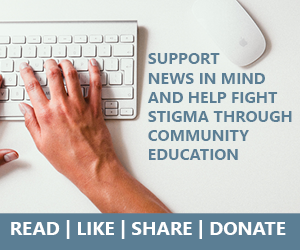The wellbeing of Australian women ranks 17th in the world, according to the new global Women, Peace, and Security (WPS) Index, released at the United Nations on October 26.
Measuring inclusion, justice, and security for women in 153 countries, Iceland placed first while Syria and Afghanistan tied for last place.

On a global scale, the story of Australian women’s wellbeing is “quite positive”. Photo: Kerry Murphy
The top 12 countries, which consisted primarily of northern and central European countries including the United Kingdom along with Spain, Canada and Singapore, rated highly on scores such as women’s education, their own bank account and cellphone use (considered a sign of autonomy). Unlike the low ranking countries, they also had very low shares of men believing that it is unacceptable for women to work.
“The countries in which more than half of men do not accept women working include Afghanistan, Bangladesh, Iraq, and Yemen, and rates range as high as 73 per cent in Pakistan,” wrote the paper’s authors from the Georgetown Institute for Women, Peace and Security and the Peace Research Institute Oslo (PRIO).
They add that the purpose of the index is to track the condition of women as “the denial of their rights are an early indicator of future instability and conflict”.
Australia performed well on measures including education, parliamentary representation, a lack of legal discrimination and financial independence. We scored less well on measures of employment, community safety, cellphone use and son bias, which is “a stark manifestation of discrimination against girls and women… [and] entrenched preference for sons over daughters in some communities, leading to prenatal sex selection”.
Dr Delyse Hutchinson is a senior Lecturer In Psychology at Deakin University and Senior Research Fellow for the Australian Unity Wellbeing Index.
While we may have room to improve on equality issues and intimate partner violence, which the WPS report suggests is a prevalent issue worldwide including Australia, the overall wellbeing of women in the country is “quite positive”.
“We’re in the top 20. While in Australia we often talk about women’s rights and equality and pay rates and those kinds of things – in the international context we’re doing pretty well,” Hutchinson says.
The top 12 countries tended to lead the way with accessibility to health care and public services, Hutchinson says, adding that the difference in the scores among the top 20 countries were very small.
“Whereas if you look at the scores between say Australia and some of the Middle Eastern countries they are strikingly different,” Hutchinson adds. “It’s a positive story for us.”
The Australian Unity Wellbeing Index is more an indicator of wellbeing overall in the Australian community but also paints a mostly positive picture. It is measured on seven core factors: financial security; a sense of personal achievement in your work or personal life; the quality of your relationships with others; your health; your sense of connectedness to the community and your sense of safety and future security.
“One of the striking things we’ve found in 17 years of our surveys is that [in] Australians in general, there’s not a lot of change,” Hutchinson says. “It’s amazing how stable our overall wellbeing index has been.”
Australians’ wellbeing tends to sit around 74 to 76 out of 100, which Hutchinson attributes to overall satisfaction in life, a more stable measure than an in-the-moment mood.
“That says most Australians are feeling pretty satisfied with their lives. Not everybody, but most, and that score hasn’t fluctuated greatly over the years.”
Groups in the community that have substantially lower wellbeing include carers, people with mental health disorders and indigenous communities and while the index helps to highlight who needs more support, Hutchinson says that “it’s a nice story that, in the background, the community is perhaps doing better than we realise”.
The latest survey found that the scores between men and women was “really nothing” and while the Wellbeing Index and the WPS index use different measures, there is “some overlap” in factors like safety and security.
“We tend to look at the overarching wellbeing of men and women together – ours is more an indicator of wellbeing overall in the Australian community,” Hutchinson explains.
“The WPS index is trying to pinpoint, in the international context, where we need to focus… on improving betterment and outcomes for women particularly around social justice and equality. It is really, really important.”
Key statistics from the WPS Index
- The global average for girls’ education is about seven years.
- The global mean rate of female cellphone use of about 78 per cent.
- The global average of women’s employment is about 50 per cent.
- Almost one in three women globally has experienced violence at home, with the rate rising as high as 78 per cent.
- There is extensive legal discrimination in all regions. All regions have countries scoring much worse than the global
average of 23; Saudi Arabia has a score of 54, the worst in the world. - Parliamentary representation of women ranges from a global high of 56 per cent in Rwanda to zero in Qatar to single digits in nearly two dozen countries
This piece by Sarah Berry was first seen on the ‘Sydney Morning Herald’, October 28 2017.























